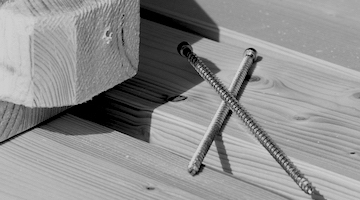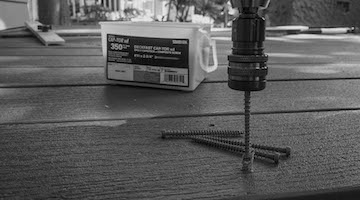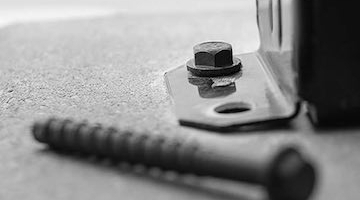- Home
- REPORTS & NEWS
- Screw Geometry-A
Screw Geometry-A
Jan 31, 2019
If the screw thread size is known, several additional geometery details have to be determined. These are screw head, length of thread engagment, screw body, thread length, and other design options.
Screw Head
The screw head includes two important aspects: (a) type of screw drive, and (b) type of head style. The type of screw drive is responsible for capability of assembly process, the type of head style is the supporting area influencing the designed function of the fastening system. The screw drives are distinguished by external and internal types. The internal types of screw drive are dominant for small scres without high load-bearing capacity because they cannot provide high torque values which can be transmitted reilably between bit and screw. But for the external type of hexagon head, they are suitable for high torque values if there is only a small clearance between wrench and screw and if the drive has no damage. Another significant improvement of screw drive is the hexalobular geometry consisting of one convex and one concave contour radius, which are alternately combined. This leads to smooth contact pressure between screw and bit as well as small-sized outer bit diameters for compact design structures.
The first form of classification for woodworking screws is according to the shape of the slots used to drive the screws into the wood. There are several different forms:
A screw, or bolt, is a type of fastener characterized by a helical ridge, known as a male thread (external thread) or just thread, wrapped around a cylinder. Some screw threads are designed to mate with a complementary thread, known as a female thread (internal thread), often in the form of a nut or an object that has the internal thread formed into it. Other screw threads are designed to cut a helical groove in a softer material as the screw is inserted. The most common uses of screws are to hold objects together and to position objects. There are many different thread forms in use today. Multiform Fasteners Co, Ltd. not only can produce precise machine screw for mating the metal parts but also specialize in manipulating the tapping technique of multiple thread in construction domain.
The screw thread size and profile normally are the main parameters used to determined the clamping force of a threaded fastening system. The other parameters are in many cases preselected, such as screw material, assembly method, and frictional situation...The clamping force is important whether in the machine assembly or structural fixing as it is directly implicate to the magnitude of the force pulling 2 fastened objects together. This can be calculated in a detailed manner or measured through a series of testing procedures.
Screw Head
The screw head includes two important aspects: (a) type of screw drive, and (b) type of head style. The type of screw drive is responsible for capability of assembly process, the type of head style is the supporting area influencing the designed function of the fastening system. The screw drives are distinguished by external and internal types. The internal types of screw drive are dominant for small scres without high load-bearing capacity because they cannot provide high torque values which can be transmitted reilably between bit and screw. But for the external type of hexagon head, they are suitable for high torque values if there is only a small clearance between wrench and screw and if the drive has no damage. Another significant improvement of screw drive is the hexalobular geometry consisting of one convex and one concave contour radius, which are alternately combined. This leads to smooth contact pressure between screw and bit as well as small-sized outer bit diameters for compact design structures.
The first form of classification for woodworking screws is according to the shape of the slots used to drive the screws into the wood. There are several different forms:
- Slotted: This is the traditional screw style with a straight slot across the head of the screw. It is a classic design, but screwdrivers can have a tendency to slip out of the slot, particularly when driving screws with a drill bit. Unless they are being used for period authenticity, slotted screws are no longer used much by woodworkers, who favor other drive types that are less likely to slip when driving.
- Phillips (cross-head): This style was developed in the1930s to correct the slipping problem that occurred with slotted screw heads. The crossed slots allow screwdrivers to grip better when driving the screws. It is a favorite style among woodworkers, although newer drive types are gradually gaining favor.
- Square-head: This relatively new type is designed to grip better and resist stripping better than traditional flathead and Phillips-type screws. Another variation has a hex-shaped recessed drive opening. The screwdriver or drill-driver bit is shaped to match the recess in the screw head.
- Star-drive: The heads on these screws have slots configured in a star shape, with six or eight sides, like an exaggerated Phillips head. These screws are most often used for structural connections, where considerable force is needed to drive the screws. There are several variations of this type, with drive shapes unique to the manufacturer. Torx is the best-known brand; others include, Pozidrive, and Polydrive, each with a slightly different drive shape.
- Flat-head screws fit into tapered recesses, such as the holes in hinges, and will lie flush with the surface when properly driven. The tapered shape of the head makes them self-countersinking—they drive themselves virtually flush with the surface of the wood. Or, they can be driven into counterbored pilot holes that allow the screw heads to lie below the surface of the wood. These have the most holding power of any of the standard woodworking screws.
- Round-head screws have a rounded top that has a flat underside, rather than the tapered shape found in flat-head screws. Round-head screws are typically used for affixing objects to wood.
- Oval-head screws (also called pan-head) are a combination of the previous two, with a head that is tapered slightly on the bottom but with a slightly rounded top. This allows the screw to partly embed itself in the wood, while the head remains slightly above the surface for a more decorative look than is possible with a round-head screw.
There are also other head shapes for specialty uses, including:
- Cheese-head screws (also known fillister head) have heads with a cylindrical shape. The name "cheese-head" is said to derive from the resemblance to flat cheese wheels. A variation known as the fillister-head screw has a slightly rounded top to the screw head.
- Truss-head screws (sometimes called “mushroom head” screws) have an oval-shaped head, but one that is flatter and larger than that on a traditional oval-head screw. These work well for applications such as mounting drawer slides, where you need a screw with good holding power but one that doesn't protrude too far.
- Washer-head screws resemble round-head screws with small washers fused into the heads. The extra surface area on the underside of the head keeps the screws from sinking too deeply, which can be helpful when using power drivers. There are several variations on this design, going by names such as "wafer head" or "super-washer-head."
A screw, or bolt, is a type of fastener characterized by a helical ridge, known as a male thread (external thread) or just thread, wrapped around a cylinder. Some screw threads are designed to mate with a complementary thread, known as a female thread (internal thread), often in the form of a nut or an object that has the internal thread formed into it. Other screw threads are designed to cut a helical groove in a softer material as the screw is inserted. The most common uses of screws are to hold objects together and to position objects. There are many different thread forms in use today. Multiform Fasteners Co, Ltd. not only can produce precise machine screw for mating the metal parts but also specialize in manipulating the tapping technique of multiple thread in construction domain.
The screw thread size and profile normally are the main parameters used to determined the clamping force of a threaded fastening system. The other parameters are in many cases preselected, such as screw material, assembly method, and frictional situation...The clamping force is important whether in the machine assembly or structural fixing as it is directly implicate to the magnitude of the force pulling 2 fastened objects together. This can be calculated in a detailed manner or measured through a series of testing procedures.



